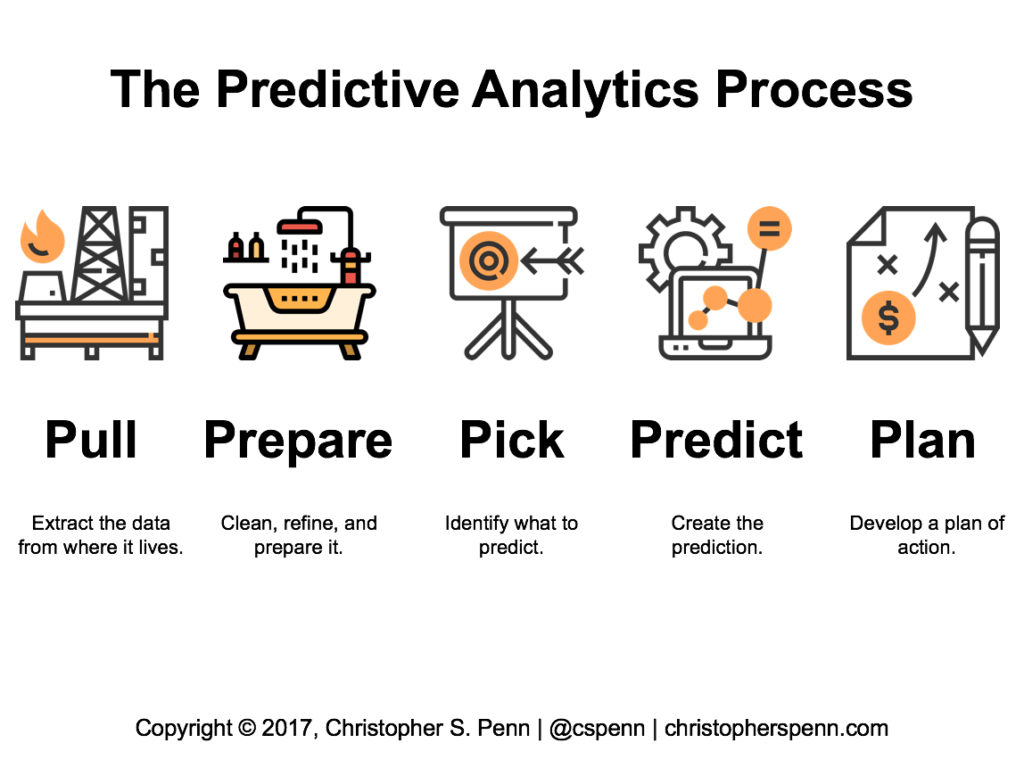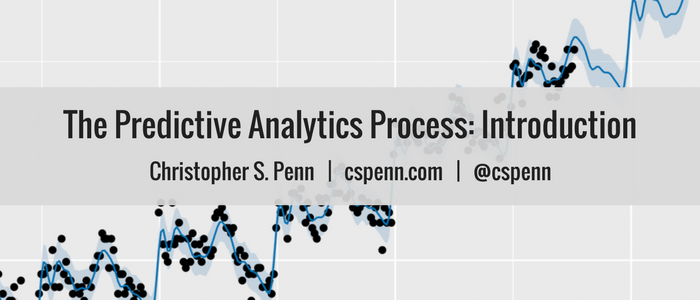The Predictive Analytics Process: Introduction
While we understand the value of predictive analytics, the ability to see into the future with specificity and precision, we are often unclear on the process to develop predictions. As a result, our predictive analytics outputs are often incomplete, lacking context, or difficult to understand.
Introduction: Where Predictive Analytics Goes Wrong
Predictive analytics often goes wrong in a few – pardon the pun – predictable ways. First, if we attempt to create predictions for things that have never happened before, we will likely fail. My friend and colleague Tom Webster highlights this in attempting to predict events such as elections. If two candidates have never run against each other before, there’s no mathematically or statistically sound way to build a model for the outcome.
Second, if we attempt to create predictions with poor quality data, our predictions will fail. Predictive analytics is about transforming the general into the specific using statistics and mathematics. The foundation of all predictive analytics is prior existing data; if that data is in terrible condition, it’s as though we are building a home on a rotten foundation.
Third, if we attempt to create predictions with poorly engineered and refined data, our predictions will fail. Even the best quality data is meaningless if we don’t spend significant amounts of time refining it and selecting exactly what we want – and removing what we don’t.
Fourth, if we attempt to create predictions with data that is a poor fit for predictive analytics, we will fail. By its very nature, predictive analytics deals with data over time. If we have data that lacks a temporal component, we will not make meaningful predictions.
Finally, if we attempt to create predictions with no context or explanation, our end product will not move the needle. We will fail to create impact with our models and predictions. In order to maximize the value of predictive analytics, we must build so that business users find immediate and long-term value in them.
Solving Problems
If we have no process for predictive analytics, any of these problems are not only possible, but likely. Solving these problems is a matter of establishing a clear process for predictive analytics.

In this series, we’ll look at the five-step framework for developing predictions from our data. By following this process, we will be much more likely to create impact with predictive analytics.
You might also enjoy:
- Almost Timely News: Recipes vs. Principles in Generative AI (2024-03-03)
- Almost Timely News, January 7, 2024: Should You Buy a Custom GPT?
- Almost Timely News, Febuary 18, 2024: From Comment to Content
- Mind Readings: Hacking Social Media Algorithms
- Almost Timely News: Principles-Based Prompt Engineering (2024-02-25)
Want to read more like this from Christopher Penn? Get updates here:
 Take my Generative AI for Marketers course! |



Leave a Reply